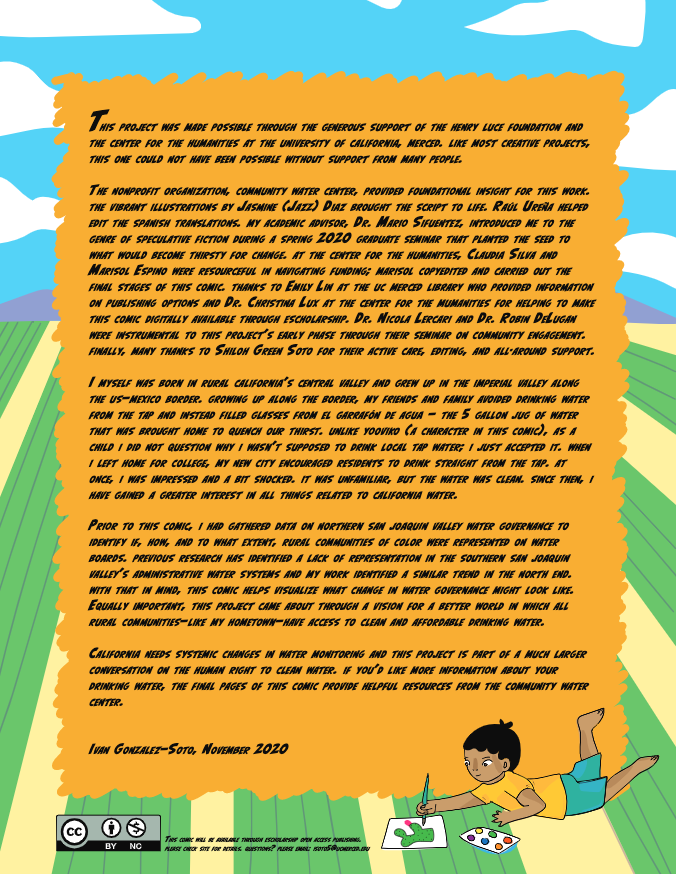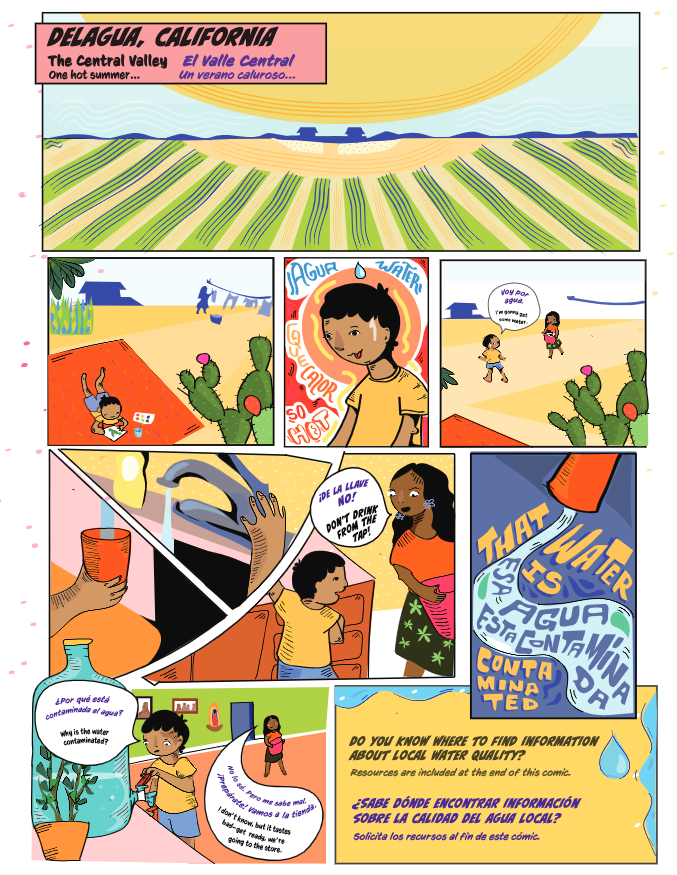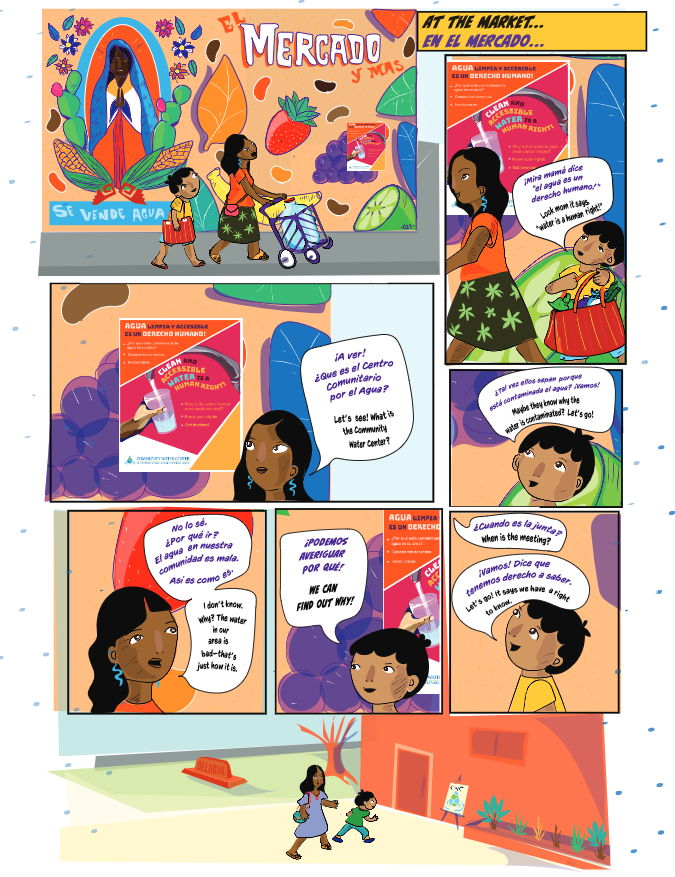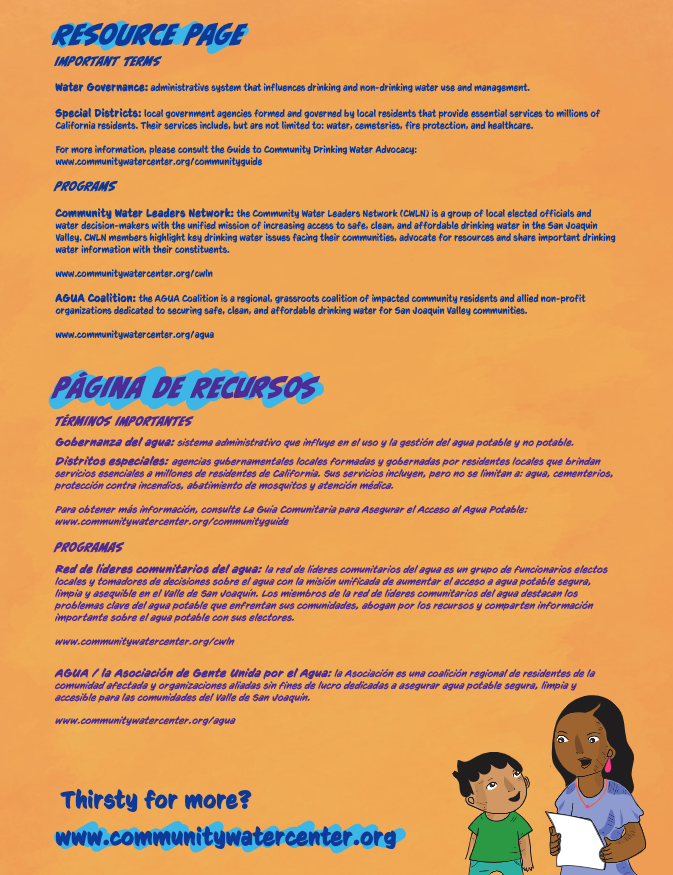Ph.D. Candidate with the Interdisciplinary Humanities Graduate Group at the University of California, Merced.
Public Humanities & Sequential Art
Welcome! My name is Iván Gonzalez-Soto, and I’m a PhD student with the Interdisciplinary Humanities Graduate Group at the University of California, Merced. On this page, you’ll find my recent efforts to communicate humanities research through sequential art. My first community-engaged research project was a comic book about drinking water issues in California’s Central Valley. It’s titled “Thirsty for Change,” and it’s based in a fictional town to represent a prevalent issue amongst rural communities of color in the state. Most importantly, it was published as an open access document through the UC’s eScholarship—you can find it here. My next creative project is a graphic novel adaptation of my dissertation on a twentieth-century social history of southernmost California’s Imperial Valley. I plan to finish that project when I graduate in Spring 2024.
Thirsty for Change:
Based in a fictional town in rural California, “Thirsty for Change'” explores themes in environmental justice and the right to clean water. This bilingual comic book introduces concepts in water governance and illustrates the possibility of systemic change to water management through community empowerment. Resources from the nonprofit organization, Community Water Center, are included within.
Funded through the Henry Luce Foundation and the Center for the Humanities at the University of California, Merced.
Illustrated by: Jazz Diaz
Samples available through the gallery below.
Download the full version on eScholarship. It’s free.
Graphic rendition of my dissertation:
Dissertation Title: “Water is King—Here is its Kingdom: Race, Labor, and the Environment in the Making of California’s Imperial Valley, 1900-2000”
For this sample page, I pulled and adjusted language from the first page of my dissertation prospectus: “For better or worse, growing up in the Imperial Valley shaped my worldview. Aridity, aqueducts, and agricultural wellsprings were distinctive features on the land and they imposed upon my daily surroundings—they were a paradox of a world in which water was king. Rural towns and unincorporated communities punctuated rows of irrigated fields while geothermal plants billowed steam into warm desert skies. Nothing seemed remarkable, and nothing made sense, except in the light of agribusiness.
Why sequential art?
I’m illustrating key stories from my dissertation for a broad audience. It’s an effort to communicate information through words and art. It’s meant for the masses. That is, I don’t expect someone to read ~200 pages of my research, but I might be able to reach a broader audience (on and off campus) through sequential art. While the single-page sample is currently in English, the final version will be available in English and Spanish to reach more folks in my community.
This page is a work in progress—please check back for updates.
Questions? Comments?
You may reach me at isoto5@ucmerced.edu







